Category: Thoughts
-

It is our Will to make Art








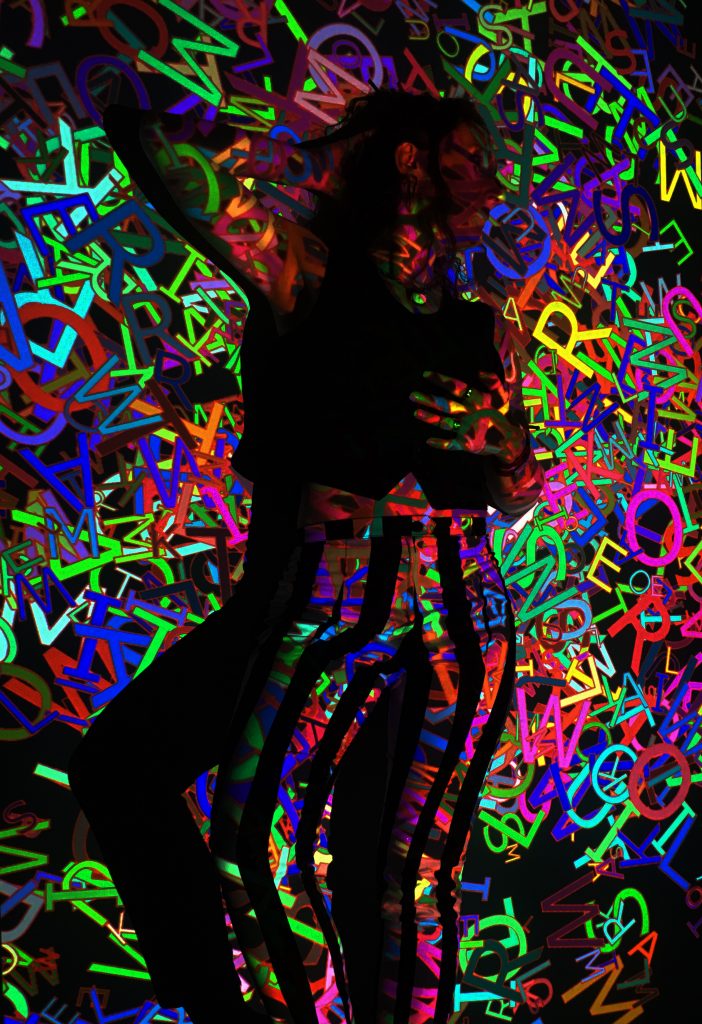



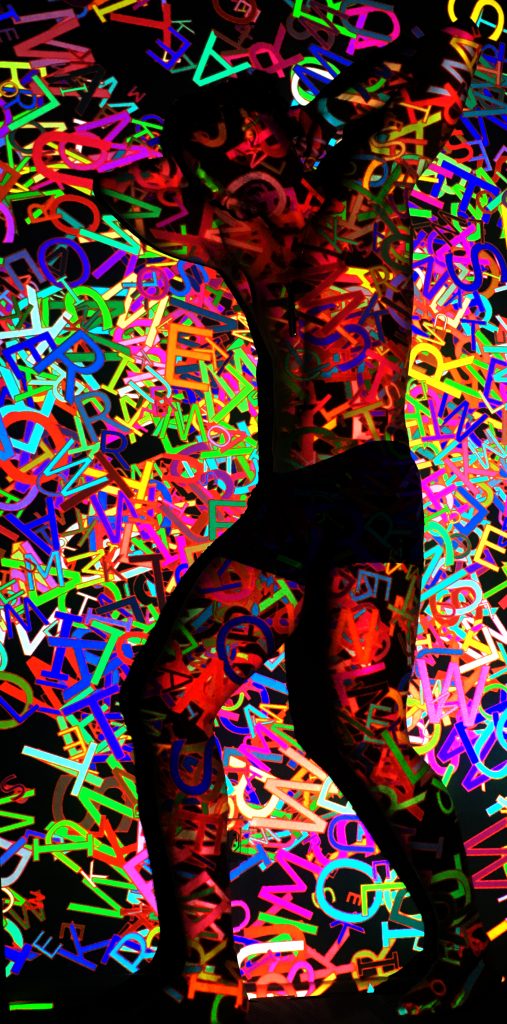









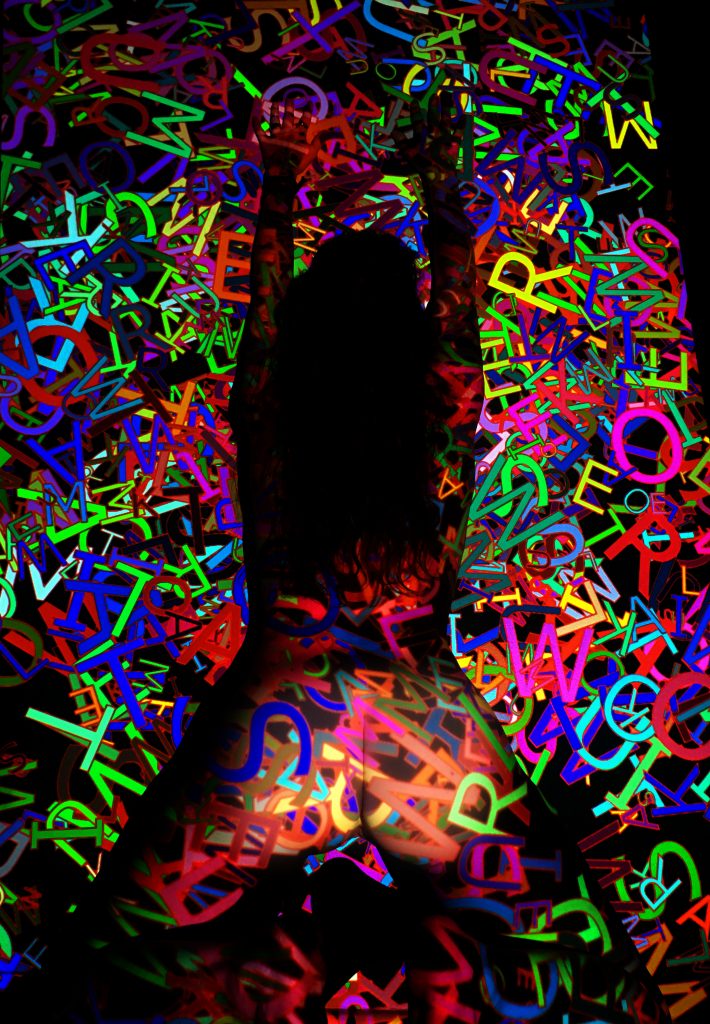


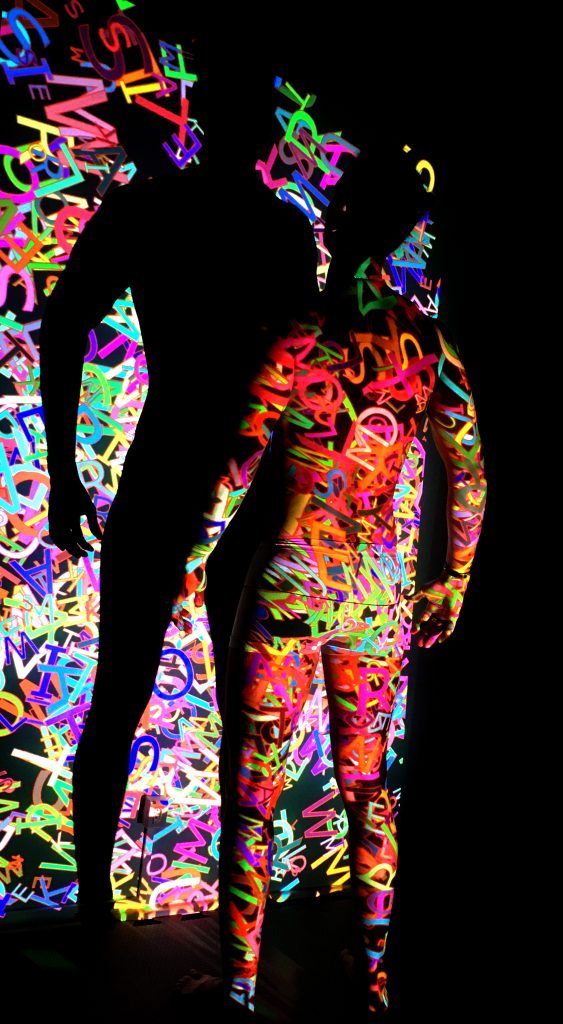

This marks the beginning of an art project that my partner, AG, and I are developing. It’s our first collaborative endeavor, and we’re pushing our creative boundaries to see how far we can go together—and how much fun we can have along the way.The concept behind this piece was to imprint our desire onto our bodies, channeling it into manifestation.
We identified our shared desire:
“It is our Will to make Art.”
We then processed this desire through the Sigilizer, which transformed it into:
“ROMEWA LUSTIK”
Finally, we took the imagery generated during the Sigilizer meditation and projected it onto our bodies.Interestingly, this magical act turned out to be a self-fulfilling prophecy, as the very act of charging our intent brought it to fruition. However, this is only the beginning. It remains our Will to make Art, and we’re excited to continue exploring this path.
-
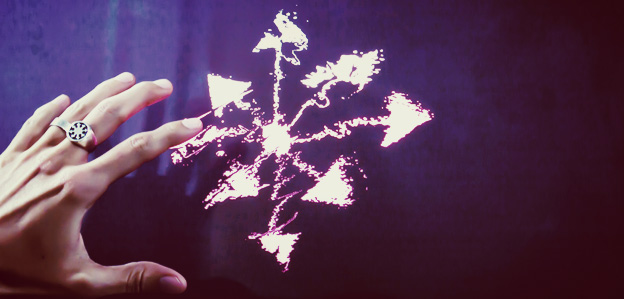
Untouchable Chaos – The closer, the weirder
I’ve been nurturing this idea for a while: How can I visually express the feeling that emerges from meditations on the essence of things? Specifically, on the essence of the ultimate freedom symbol—the Chaos Star. That feeling of weirdness, of “untouchability,” makes you realize that, in essence, everything is pure void. Emptiness. And that knowing something is changing something.
The “Untouchable Chaos – The closer, the weirder” experiment is a possible answer to that.
(Requires Google Chrome browser)For now, it is a web experiment, but the ultimate goal is to create a real-world installation, as shown in the picture below, when the right opportunity arises. (Anyone interested in supporting it?)

The installation project The “distance measurers” can use the affordable Bare Conductive paints and boards: https://www.kickstarter.com/projects/863853574/touch-board-interactivity-everywhere
These would transmit user distance data to computers. With that data, a computer could provoke visual distortions on the “huge LED TV screen,” as well as manipulate the “colorful LED lights” and, most importantly, activate the low-pass sound filter into progressively deeper levels. Powerful low-frequency speakers would play those filtered sounds, creating an intense feeling of weirdness as the user approaches the screen—culminating in a sense of complete awkwardness when the lights reach full brightness. If you use good headphones, you can experience a bit of this in the web version.Technology playground:
Beyond expressing certain thoughts, this experiment was a way to explore new web technologies.
The Chaos Star rendering heavily relies on the amazing PixiJS framework. It uses WebGL, enabling those crazy filters with impressive performance. I’ve been developing this experiment since PixiJS version 1.3, and the final version here, 2.0, is incredibly fast. My first approach was to draw the star and use it to mask some bitmaps, but anti-aliasing for WebGL graphics is poorly supported across browsers. After months (literally) of struggling with this, a simple idea emerged: draw the Chaos Star inversely, render its texture to get a smooth and beautiful bitmap, and layer it on top of everything. The visual effect is the same, but it eliminates the need for masking, ensures smooth anti-aliasing, and improves performance. A win all around.
I also refined my algorithms for drawing Chaos Stars, originally started with the Generator. These algorithms now produce less symmetrical shapes and varying arrow sizes.
The WebAudio API was another area of exploration. This technology introduces exciting new features in browsers, but each browser renders sound differently. For this reason, I chose to make it a “Google Chrome only” experience.
Another feature I implemented was a socket connection. Right-click to get the QR Code, scan it with your phone, and slide your fingers on your phone’s screen to replace the mouse distance measurement. This was my first experience with NodeJS and Socket.io. Really cool stuff.

Right click to get the QR Code, scan with your phone and slide your fingers Leap Motion was one of my initial ideas for simple distance measurement, but it works only for short ranges, making it less suitable for this project. However, its easy JavaScript connectors make it fun to experiment with. If you have a Leap Motion, you can distort the star with it (see the GIF below). The Kinect was never a serious option because it’s overly complex for this purpose. Additionally, connecting it with JavaScript is cumbersome.

Leap Motion proof of concept The didgeridoo sound was performed by Jimmie P Rodgers, recorded with a Zoom H2 at various mic gain levels. Permission to use it under CC0 was graciously granted by the artist.
See it live. Click here.
-

The Sigilizer
Important Notice: I no longer maintain the native apps for Sigilizer. The only active version is the web-based application, available at https://caostar.com/sigilizer/.


I’ve just released a new magickal tool: the Sigilizer. Below is the explanation presented within the app:
Sigilization is a magickal technique that involves redesigning a desire, either mantric or pictorial, and charging it in a state of Gnosis so that the created symbol can access the almighty “Subconscious,” ultimately helping make that wish come true.
There are several ways to create a sigil, but the method used by the Sigilizer to create mantric sigils was popularized by Austin Osman Spare and consists of three simple steps:
1 – Declare an intent:
Ex: It is our will to create sigils.
Note: It is said that starting with “It is my/our will” is more effective.
2 – Eliminate all repeated letters, accents, and points:
It
is our willtocreatesigilsThis leaves us with:
I T S O U R W L C E A G
3 – Arrange the letters to form a pronounceable mantra:
Ex: OGITAL ERCUWS or TESAGO CURILW
This technique has proven effective and is popular among Chaos Magicians. However, the process can feel bureaucratic and tedious, while the most important part is the state of Gnosis and charging the sigil.
At this point, the Sigilizer comes in. The app automates the process of creating mantric sigils based on the intent you input. And not just one sigil, but several variations. The script always seeks to create the most pronounceable mantras by moving vowels to separate consonants.
Additionally, the Sigilizer is a collective project aimed at understanding what magicians are desiring. Each input intent is saved anonymously in a database (Only the web app saves inputs; the versions in the App Store and Google Play do not store any data.). The idea is to eventually compile a “Desiring Panel,” which will be showcased in art installations and related events.
Besides generating sigils, the app offers a simple meditation to help charge them. Input your desire, sigilize it, and click on “Can we offer a meditation to charge it?” to take a brief journey (Available only in the desktop version.). Below is the explanation about the meditation:
This meditation uses the Sigilizer to generate multiple sigils based on your desire. Each sigil is “spoken” by the app, while the letters forming the sigil are drawn in motion in the background. The idea is for you to sit in a meditative posture and empty your mind to “receive” impressions from the visualization. The full meditation lasts about 15 minutes, but you can watch the screen for as long as you need. Experience suggests that using strong doses of hashish can significantly enhance this meditation.
And a Tool for Guerrilla Magick – A Mobile Sigilizer

Since the primary goal of the Sigilizer is to eliminate the tedium and bureaucracy often found in magick, a mobile version was needed to allow sigil use in “runtime” situations. Simply open the Sigilizer on your phone, and bam! The mobile version of the tool will present itself, optimized for the device. You can generate sigils for anything at any time. “It is my will to receive my pizza, eventually,” anyone?Even better, after opening it for the first time, your phone will save the app, so you can use it offline—even in the jungle!The Sigilizer is now available on both the App Store and Google Play, much easier to use with full-screen mode support.
PS: The core engine of the app is hosted on GitHub (https://github.com/caostar/sigilizer) under the Do What The Fuck You Want To Public License (WTFPL).
-

The geometry of chaos and the Chaos Mudra
There are two primary symbols of Chaos: the Chaos Star and the Chaos Sphere. Both convey the same concept, but one exists in two dimensions, and the other in three. While the Chaos Star is defined as “eight arrows in a radial pattern,” the Chaos Sphere can be described as “eight arrows in a three-dimensional radial pattern.”
As I’ve mentioned before, I continue to be fascinated by these symbols. My meditations almost always lead me to visualize them, with increasing levels of detail. It’s become something of an obsession—though a powerful, magickal one. How do I build them? What are their deeper properties? The more I dive into this, the more I feel I am attuning my mind to a “chaos frequency.” I’m not talking about the ideological concepts of chaos, but rather a state of consciousness where *everything* is possible. The Chaos Star/Sphere has revealed itself to me as the ultimate sigil for freeing the mind. Don’t just talk about freedom. Don’t think about it. Charge the chaos symbol into yourself until it transforms you.
And what does it hide beneath its surface? As anyone who has studied something for a long time might understand, I began seeing “things” in the symbol. Mostly, I saw hidden geometries that seemed to channel powerful numbers, offering me hints for my rituals.
The Chaos Star is simple. It consists of 8 arrows evenly distributed across 360°. Dividing 360° by 8 gives us 45° between each arrow. Everyone knows that 45° is a special angle. From this, we can see 8 triangles and an outer circle. But I didn’t trip on this… yet.

For now, let’s shift focus to the Chaos Sphere, where a whole new array of insights emerge.
The arrows in the Chaos Sphere are the space diagonals of a perfect cube. The edges of the cube ensure that all the arrows are separated by the same distance, since all edges share the same length. But how do I calculate the angles of these space diagonals? Well, I’m not exactly a math expert, but after a few days of refreshing my trigonometry, I finally figured it out.

To my surprise, what defines the base of rotations for the Chaos Sphere’s arrows is something called the Magic Angle. Yes, indeed: 54.735610317° is considered “magic” by both science and medicine.
http://en.wikipedia.org/wiki/Magic_angle
http://en.wikipedia.org/wiki/Magic_angle_(EELS)Of course, the Magic Angle isn’t alone. There’s its counterpart:
35.264389682° (Could we call this the “Dark Magic Angle”?),
its double:
109.471220634° (The angle between two arrows of the Chaos Sphere),
and its opposite double:
70.528779365° (The opposite angle between two of the Chaos Sphere’s arrows).These numbers can be just numbers, or under the right paradigm, they can be incredibly powerful. Personally, I’ve finally found a justification for a mudra that comes to me almost every time I enter a deep meditative state. My hand moves toward my face, and my fingers naturally form a specific angle—the angle between two arrows of the Chaos Sphere. Until now, I had no idea why I kept doing this. But now I know—it’s because the arrows of the Chaos Sphere were entering my mind, my body, my soul. From this moment on, I’ll call it the Chaos Mudra.

And with that, I now have all the data I need to generate a Chaos Sphere entirely by code. See it here. This is the first step toward creating the Chaos Sphere Generator.
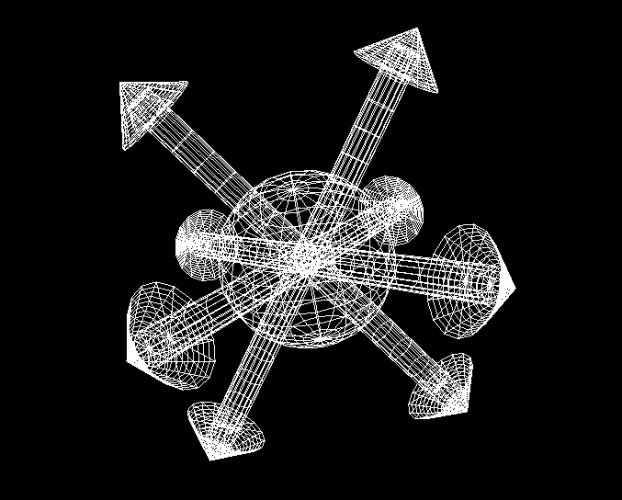
-
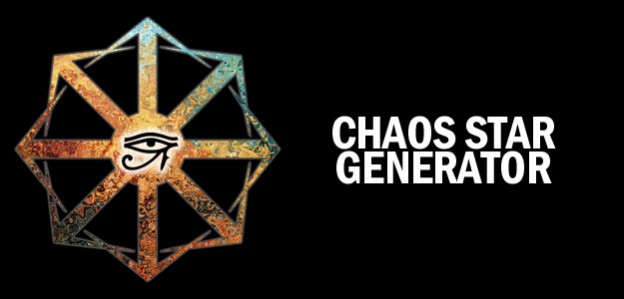
The Chaos Star Generator
Since I first became involved with Chaos Magick, the Chaos Star symbol has been firmly etched in my mind. It’s both beautiful and deeply meaningful—representing freedom beyond imagination. The eight directions symbolize infinite possibilities, “including before conceiving,” as A.O.S. would say.
After countless meditations and several profound epiphanies, I began seeing Chaos Stars everywhere. Remember the Greek concept that “everything is made of triangles”? Well, what if “everything is made of Chaos Stars”? Each particle, each unit of matter, could be a Chaos Star—an all-possible-including-possibility just waiting for perception to manifest one of its infinite possibilities in the “real world.” That’s how I’ve been diving deep into the concept. It’s been quite the adventure.
This connection deepened when I started exploring generative art. I’ve visualized the Chaos Star in countless forms. How could I possibly recreate them all on a computer screen? And more importantly: what *exactly* is a Chaos Star? Wikipedia defines it as “eight arrows in a radial pattern.” For me, this is a perfect definition, as it leaves the door wide open for infinite abstraction.
And so, the Chaos Star Generator was born. It’s a JavaScript web app where you can input parameters to explore the endless visual possibilities of “eight arrows in a radial pattern.” Of course, you can also seek random inspiration by clicking on the screen to generate one, or go further with an infinite sequence by clicking on “Inspire me randomly, please.” You can even save the Chaos Star or share it directly to your Facebook wall.
The process of building this app came with its share of technical challenges, which I’ll likely discuss in future posts, such as how to publish directly from the
<canvas>element to your Facebook wall. While I’m using some open-source code from others, everything I’ve personally created is released under the WTFPL license, so feel free to “Do What The Fuck You Want To” with it.Beyond being a beautiful creative tool, the Chaos Star Generator can also serve as a powerful magickal tool. Here’s a fun experiment:
1 – Upload a texture (using the left controls) with a sigil placed at the exact center of the image. Like this:

2 – Click on “Inspire me randomly, please.”
3 – Open the controls (top right) and adjust the “transitionTime” parameter to set your preferred speed.
4 – Enter into a state of gnosis and focus on the moving Chaos Star while keeping your sigil in view.
5 – Boom. You’ve just created a powerful ritual moment.Try the Chaos Star Generator.
